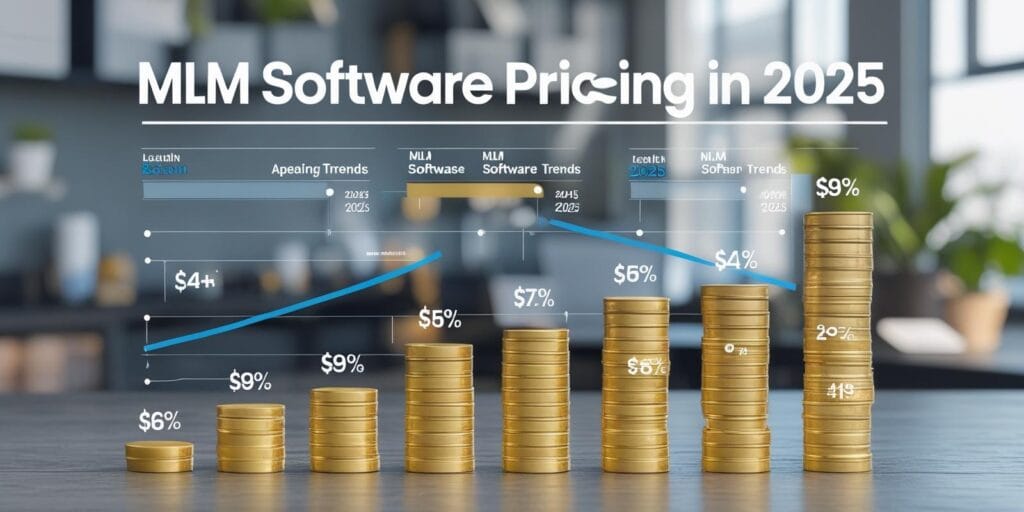Introduction: Why Pricing Transparency Matters in MLM Software
When business owners in the direct selling industry begin their search for the right technology, one question often dominates the conversation: “How much does MLM software cost?”
The truth is, MLM software pricing isn’t a one-size-fits-all equation. It varies based on features, scalability, customization, and the specific needs of your business model. In 2025, where direct selling companies in the USA and across the globe are rapidly adopting technology, understanding pricing structures has become more important than ever.
In this blog, we’ll break down the different MLM software packages, the factors that influence pricing, what to expect in 2025, and how business owners can strike the perfect balance between affordability and value.
What Is MLM Software and Why Does Its Pricing Vary?
MLM software is the backbone of any network marketing business. From managing distributor networks to tracking commissions and integrating e-commerce, the software ensures your operations run smoothly.
But here’s why MLM software pricing is not uniform:
- Every MLM plan is different. A binary plan requires different modules than a matrix or unilevel plan.
- Customization matters. Some businesses require niche features, while others stick to core modules.
- Scalability affects cost. A startup with 500 distributors will have different software needs than a company with 50,000 members.
- Support and maintenance. Ongoing updates, server requirements, and technical assistance also factor into the final price.
Think of it like building a house: you can choose a pre-designed package or a fully custom home — and pricing changes accordingly.
Types of MLM Software Pricing Models
1. One-Time Purchase Model
- You pay once and own the software outright.
- Often customized to your MLM business.
- Best for companies who want full control.
- Pricing: Starts around $5,000–$25,000+ depending on complexity.
2. Subscription-Based Model
- Pay a monthly or yearly fee.
- Lower upfront costs, but recurring payments.
- Includes regular updates and cloud hosting.
- Pricing: Typically $99–$1,000+ per month, depending on features.
3. Hybrid Model
- A mix of upfront payment + subscription fees.
- Gives flexibility in both ownership and ongoing support.
- Pricing: Often tailored; mid-range costs with add-ons.
Factors That Influence MLM Software Pricing in 2025
When researching MLM software cost, these are the main factors that will shape what you pay:
1. Business Size and Scale
- Small startups: Affordable packages with essential features.
- Mid-sized companies: Require advanced tools, integrations, and scalability.
- Large enterprises: Fully customized development and enterprise-level security.
2. Compensation Plan
- Binary MLM software is often priced differently from matrix or unilevel because of the logic and calculations involved.
- Hybrid plans usually cost more due to complexity.
3. Customization Level
- Off-the-shelf MLM software: Cheapest, but limited flexibility.
- Fully customized MLM software development: More expensive but tailored to your exact model.
4. Integrations
- E-commerce integration (Shopify, WooCommerce, Magento).
- Payment gateways (PayPal, Stripe, crypto payments).
- CRM and ERP systems.
Each integration increases overall costs but also adds business value.
5. Technology Stack
- Cloud-based vs. on-premise software.
- Modern stacks (AI, blockchain, mobile-first) come at a higher cost but future-proof the system.
6. Support and Maintenance
- 24/7 customer support, bug fixes, and updates.
- SaaS-based pricing often includes this, while one-time purchases may require an annual fee.
Average MLM Software Pricing in 2025
Based on market research, here’s what businesses in the USA and globally can expect:
- Startup MLM companies (basic software): $2,000–$7,000 one-time OR $99–$299/month.
- Growing businesses (scalable software): $10,000–$25,000 one-time OR $300–$800/month.
- Large enterprises (custom-built MLM software): $30,000+ one-time OR $1,000+/month with integrations.
Tip: Pricing should always be considered alongside ROI. A slightly higher investment in MLM software development can save you thousands in errors, inefficiency, and compliance issues.
MLM Software Packages: What Do They Include?
When reviewing MLM software packages, most companies in 2025 bundle features into tiers. Common inclusions are:
- Basic package: User management, commission tracking, and compensation plan setup.
- Standard package: Add reporting dashboards, product management, and e-wallet integration.
- Premium package: Advanced features like e-commerce, multi-currency, multilingual support, and mobile apps.
Knowing what’s included in each package helps business owners make smarter decisions about what they actually need — instead of paying for unnecessary extras.
Trends in MLM Software Pricing for 2025
The MLM software market is evolving, and so are pricing structures. Here’s what’s shaping costs this year:
- Cloud-Based Pricing Dominates
- Subscription-based models are growing in popularity due to lower upfront investment.
- Customization Costs Are Rising
- Businesses want personalized solutions, especially in the U.S. market, driving higher custom development demand.
- AI and Analytics Add Value (and Cost)
- Predictive analytics, AI-driven insights, and fraud detection are premium add-ons.
- Crypto and Blockchain Integration
- More MLM companies in USA are accepting crypto payments, adding both opportunity and development costs.
- Globalization Features
- Multi-currency and multilingual modules are increasingly in demand for cross-border teams.
How to Choose the Right MLM Software Pricing Plan
When evaluating MLM software pricing, don’t just look at cost — focus on value. Here’s how business owners can make the best choice:
- Define your MLM plan. Are you using binary, matrix, unilevel, or hybrid?
- Set a realistic budget. Balance affordability with long-term growth.
- Start small, scale later. Choose a package that grows with your business.
- Compare vendors carefully. Look beyond the sticker price; check reviews, support, and features.
- Consider compliance. U.S. businesses need software that adheres to strict MLM regulations.
Common Mistakes to Avoid with MLM Software Pricing
- Choosing the cheapest option: It often lacks features and scalability.
- Ignoring hidden costs: Setup, maintenance, and integrations may not be included.
- Not factoring scalability: What works for 500 distributors won’t work for 50,000.
- Skipping demos: Always test before committing.
Conclusion: Pricing Isn’t Just About Cost — It’s About Value
In 2025, MLM software pricing is shaped by flexibility, customization, and the growing need for advanced technology in direct selling. Whether you’re a startup in the USA or a global enterprise, the right investment in MLM software can mean the difference between stagnation and sustainable growth.
The key is to focus on value, scalability, and compliance rather than just the upfront price tag. With the right MLM software development partner, you don’t just buy software — you invest in the long-term success of your business.



